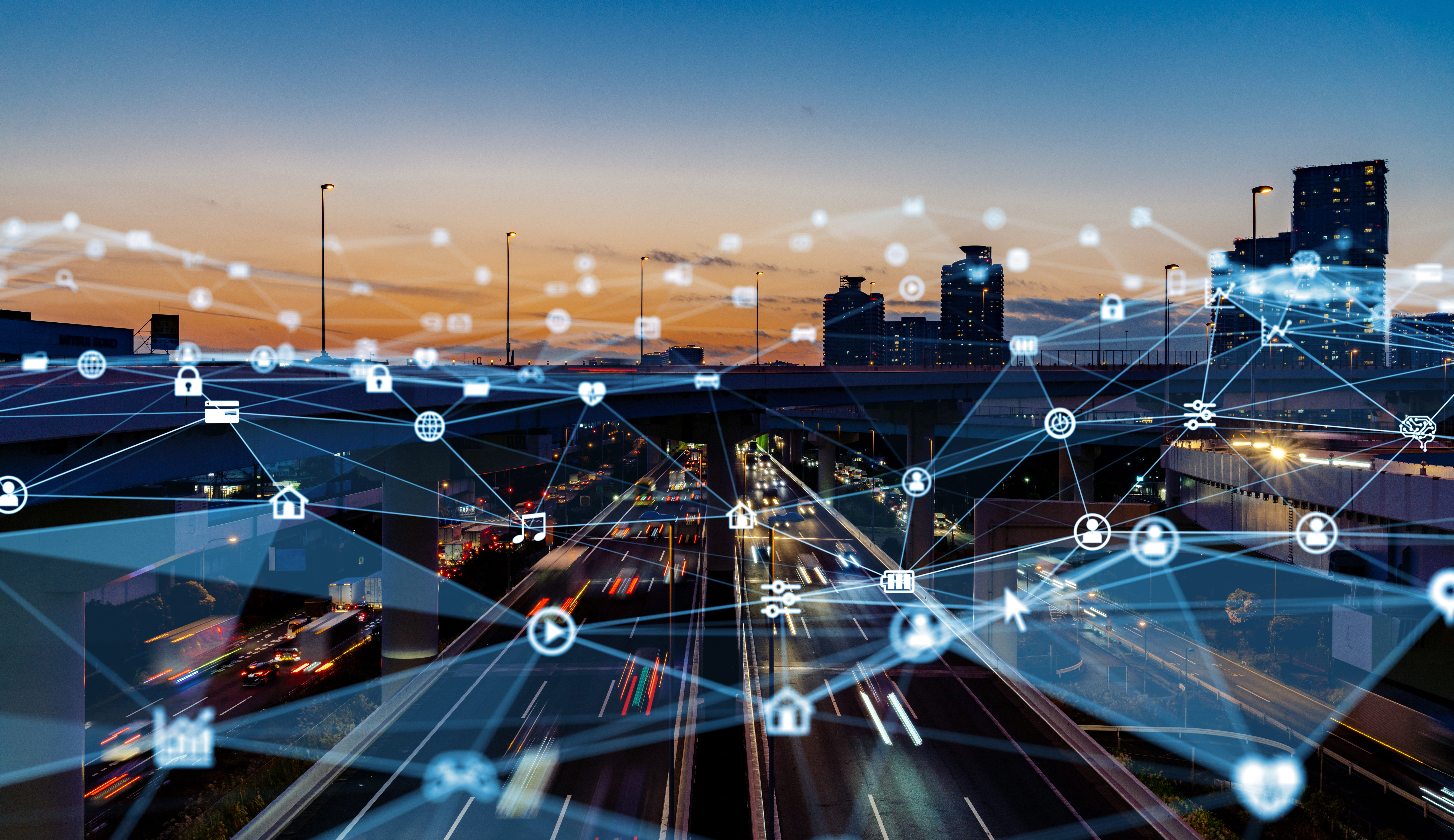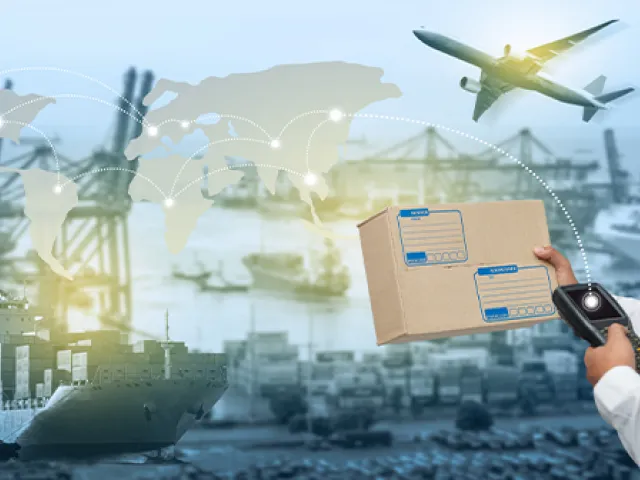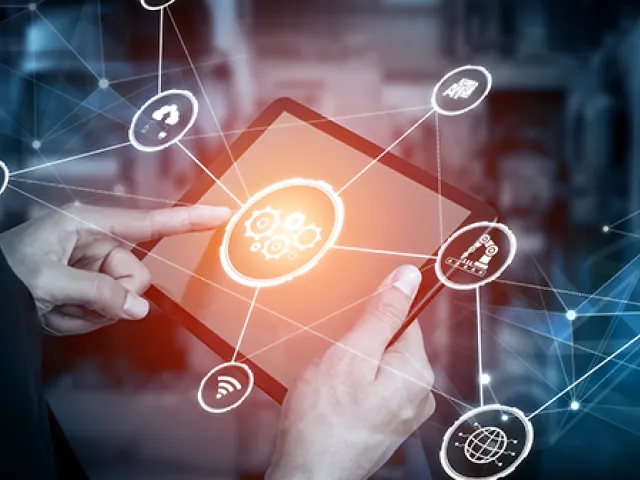Table of contents

To truly advance your supply chain digitalization efforts, leverage data not just to solve immediate issues but to proactively identify and prevent potential disruptions. By focusing on predictive insights and risk mitigation, you can transform challenges into opportunities for innovation and resilience, according to Dan Bell, Senior Vice President of Innovation and Strategic Operations at Marken, the clinical precision logistics and advanced therapy subsidiary of UPS Healthcare.
In this episode of Orchestrating Outcomes, Bell sits down with host Henry Ames, GM of Distribution & Logistics Orchestration at TraceLink, shares insights on the evolving pharmaceutical supply chain, the role of innovation, and how Marken leverages UPS’s vast global network to ensure patient safety and product quality. Drawing on more than two decades of firsthand experience, Bell highlights the strategic challenges and advancements in cold chain logistics, digitalization, and compliance, offering a detailed look at the future of supply chain management in life sciences.
Topics covered in Part 1 of our interview with Dan Bell:
- The challenges of digitalization in pharmaceutical supply chains, and how meaningful data usage can improve planning and risk mitigation.
- How Marken leverages the global reach and resources of UPS to create customized logistics solutions that ensure the safety and efficacy of critical products.
- The complex workflows required to support patient-centric, time-sensitive, and temperature-sensitive transactions within the pharmaceutical supply chain.
- The digital transactions and data flows within Marken’s global network, supporting everything from booking requests to real-time shipment tracking.
And be sure to watch Part 2 of our interview with Dan Bell for more on overcoming the obstacles to pharma supply chain digitalization, Marken’s approach to exception handling and continuous improvement, the critical role of IT in optimizing supply chain visibility, and much more.
Video Highlights:
- 04:47 - What are some of the biggest gaps that exist today in terms of supply chain digitalization?
- 08:15 - And can you talk a little bit about how Marken may leverage the depth and breadth of the broader UPS network?
- 10:42 - What are the critical workflows required to support complex patient-centric transactions and the complexity of the broader pharmaceutical supply chain?
- 14:28 - What types of data and digital B2B transactions are flowing through the Marken network today?
TRANSCRIPT
TRANSCRIPT
Welcome to TraceLink's Orchestrating Outcomes. Orchestrating Outcomes is a new series from TraceLink where we sit with industry thought leaders, exploring obstacles, outcomes, and the strategic impact of end-to-end supply chain digitalization. I'm thrilled today to have with me Dan Bell, Senior Vice president of Innovation and Strategic Operations at Marken.
Dan, I've had the pleasure of knowing you for the better part of the last 20 years or so. So, I'm really thrilled to have you on today's program. Thank you for taking some time. We started about the same time, I guess, in what I would call the pharmaceutical supply chain space. It's been a very interesting two decades of growth. Could you start by giving a little bit about your background, a little bit about Marken, and maybe some of your roles and responsibilities?
Sure, absolutely. And thank you for inviting me to this session. Henry, it's interesting, you say two decades. I just celebrated 21 years with Marken this past Friday. So, you're right on the money there with two decades. Congratulations. Thank you very much. I've had many different roles in the company. I think probably the best way to think about it is I'm an engineer by training. So, a kind of problem solving engineering mindset, heavily focused on the temperature control aspects of supply chain.
I'm also, through, I don't know, misguided advice somewhere early on in my career focused heavily on the trade and regulatory compliance of trade advisory. I went to night school, became a licensed customs broker and got really into what some might see as heavy lifting when it comes to reading. But I really got into the regulations.
And I think you'll probably remember there was a period of time when good distribution practice focused heavily on a kind of updated regulation and guidance from the European Union, which kind of informed the rest of us in how we manage temperature control and assuring the quality of goods moving within a supply chain. So, that kind of regulatory background coupled with the engineering has sort of formed most of my career at Marken. Obviously very heavily into the operational side at various roles, as I said, both running regions from P&L perspective around the Americas for a number of years.
But really the passion is around the innovation side. And innovation can be everything from the assets—the box if you like or the monitor or recorder that's in that box—how that moves through a network. But then the network itself, right? What can you do to make that network really work for the products that you're putting in it?
We've had plenty of tests over the years, new regulations, new innovation for those solutions. We're going through somewhat of a revolution right now and of course we made it through the pandemic where most people didn't think twice about logistics. But now for sure, it's a topic. Maybe even it's a topic over the dinner table. How do they do that? How does that work? So, I think in those 21 years, I probably learned a lot from my peers and from the companies I've worked alongside and of course, the sponsors that we support and their vendors as well. So, I think cold chain, drug distribution, drug supply, clinical, and commercial is where I've really cut my teeth. So, thank you for that question.
Well, thank you. As you were talking, I was thinking about the broader global regulatory and standards-based guidance that has evolved over the last 20-plus years. And I was thinking about USP 1079 and 1118. And I know you were involved in IOTA standards, the original Chapter 17, and then the Perishable Cargo Manual, and EU GDP, and just a whole host of new regulations. So, that's very interesting to hear that intersection of innovation and technology.
When we look at broader supply chain visibility—I've seen you at many, many conferences over the years and enjoyed many of your presentations. There's so much talk around pick your buzzword, whether it's supply chain visibility, AI, ML, big data.
But we're still seeing multibillion dollar supply chains have elements of manual transactions being managed with spreadsheets and different things, emails. When you take a step back, what are your thoughts on this and what are some of the gaps that exist today in terms of digitalization?
That's a wonderful question and I think if you think about the general public, we adopt new technology very quickly. It's in our nature to and it's certainly accelerated over the years. But as an industry, certainly the pharmaceutical industry that we service, we're very slow to adopt. We're a little risk averse. There's been great advancements I think in how to capture data, whether that's devices for things in transit, visibility, where is it? What's happening to it in the environment? But it's how you use that data and how you use it in a way that is meaningful.
Data for data's sake really is just data at the end of the day. And so, I think where we struggle a little bit is to apply that information and apply it in a way that gives us something that is meaningful and useful. And there's several areas within that kind of whole scope. Does it help us plan better? Does it help us build a better mousetrap? Do we become more acceptable of risks because those risks have been mitigated through a plan using that information?
The other side of course is, you know, we have therapies that are more and more sensitive to supply chain disruption. And so, how can you use that kind of information to intervene? Right? What does it take to swoop in and have a near miss as opposed to a catastrophe? So I think some of the challenges are, you have so many choices, so many ways to collect that data, how do you pick the right one?
I asked someone on our team to give me a matrix of what our customers are going to use for a device to know where their shipment is or know what ambient conditions are being exposed to that box. And of course, I had 12 large pharmaceutical companies on my matrix that we are working with and they all had different opinions about which ones were the right ones. And so, having that kind of agnostic approach to which is the right device or which is the right piece of software and focusing more on how you interconnect with that—how you get that data and then how you use that data—becomes far more important. But you know, spoiled for choice, I guess, is the summary answer to why don't we adopt it faster?
I appreciate that. And I thank you for that overview. So, I'm gonna switch gears for a moment and I'll preface this next question by saying this is all obviously publicly available information. But your parent company, UPS, has access to over 200 facilities with stated 17 million square feet of CGMP and GDP-compliant distribution space across almost 40 countries around the globe with reported revenue in the healthcare division alone of roughly 10 billion with 'b' and plans to double that by 2026.
Could you share with us a little bit about sort of what are the investments being made within the Marken organization to support this growth? What investments around digitalizing the flow of information around the movement of goods? And can you talk a little bit about how Marken may leverage the depth and breadth of the broader UPS network?
Wow, what a great question. There's a lot to that one, Henry.
So I think, first of all, it's all about the network. It's all about capability, right? And so, if we think about having a toolbox: If you have enough tools in that, you can build solutions that fit the demands of whatever you want to put into that network. And of course, you know, Marken has benefited, being part of UPS in the healthcare division, in that we can leverage that network to help us achieve those goals and make those unique solutions. It's one of the few places where you have all of it within one company. So, whether it's I need a distribution center that's GMP compliant, or I need a common carrier, small-package network to move things very quickly and efficiently. Or, you know, leveraging whatever we are, the seventh or eighth largest airline in the world. All of those tools allow us to build solutions that fit what it is that we're trying to do in that space.
I think in terms of investment, one of the things that I've enjoyed, where private equity has different priorities, companies like UPS are able to make both organic and inorganic investments. So, inorganic, of course, meaning acquisitions. What other companies can we bring in to enhance that network? What capabilities do we not have in certain regions that we want to purchase and bring into a ready made network?
But it also allows us to be nimble enough to recognize that both the manufacturing supply chain and the distribution supply chain will change. We saw that, and the ability to flex and react to those changes through facilities and assets on the ground allows you to grow and grow fast, right? And so you mentioned the target growth that is public domain knowledge. And of course, it's a conversation that we have quite regularly in our leadership meetings as to, what do we need to do to achieve that? Right? How much of that will come through acquisition? How much of that will come through as market share?
And I appreciate those insights. Thank you. Sort of maybe going back to some of your engineering, relying a bit on your engineering background. Could you talk to us a little bit about the critical workflows required to support these types of complex patient-centric transactions? You talked about time and temperature sensitive movements of goods. I'd love to drill down a little bit into sort of the workflows needed to support the complexity of this broader pharmaceutical supply chain.
Yeah, absolutely. I mean look: Somewhere, I imagine it's in one of our marketing publications, but it's really important, and I'm sure many companies say this, you start with the patient, right? It might be the customer, but the patient is your ultimate client, whether you're interacting with them directly or not. So, it's patient first and quality driven. The quality part is really about all of those tools and work streams that you're thinking about that look at how can you deliver a product that is kept and maintained safe and efficacious, especially in the clinical domain where you can't just go get some more, right? There's a limited supply, you're in a race to the market.
And so when you start building out these solutions, risk analysis is a huge part of that. I think some of our best solution engineers are very risk averse or sometimes quite paranoid. You sit down and you think, what are all the things that could possibly go wrong? Adulterated product or damaged product through temperature excursions. But then you look at other things like, will it be able to pass through customs? Is it gonna sit there six months while we wait for some kind of release from one of the participating agencies? So, a really robust and kind of paranoid look at the solution you come up with to deal with that risk analysis. I think the other thing is having an open mind.
I remember being asked a question early in the pandemic. It might have been from somebody from Warp Speed. The government, if you remember, was gonna run the supply chain for vaccines and they were absolutely astounded that you could put a -80 degree product in the same network and delivery vehicle that was bringing shoes and pet food and all the other things that people buy online, in that same network with the same driver. And I think if you'd asked someone before, that time they would have said that's crazy, right?
Sometimes necessity drives that little bit of invention. So, I think with an engineering mindset, we're always predisposed to find a solution, solve a problem. But I think the approach that we've taken is really to kind of run that risk analysis but have an open mind about how you deal with that. There are many challenges that we could really get into, you know, geopolitical, etc.
I think we got out of the pandemic and then Russia invaded Ukraine and there was concerns in China, the regulations start adding sanctions. As someone who has to be creative in the way you solution, I never want to tempt fate and say, oh my God, what's going to happen next? Because we've had volcanoes and strikes and all those kinds of things. But that's a normal part of business. And so you build around that and find a way to make it work.
You know, that's helpful. You touched on so many different topics there. Thinking about patient-centric, I think one of your slogans is: It's a patient, not a package. So, thinking about those information flows that follow the critical workflows, could we maybe explore a little bit deeper into B2B transactions? What types of digital data flows through the market network today? I mean, obviously you, you, you do all different types of services uh and, and continuing to expand those services in support of the pharmaceutical supply chain. Could we talk a little bit about the digital transactions themselves?
Yeah, I mean look, this is a great topic. I think about how orders or requisition, how do people initiate a request, right? Back to your comments earlier about how somebody sends an email or a spreadsheet of sites, if it's in a clinical scenario, how that information for initiating a booking is ripe for simplification and to take advantage of the metadata that's associated with that.
We're all used to: If you take a flight now you don't phone a travel agent and get a paper ticket in the mail a few days later, right? That's me dating myself a little bit. In fact, if you want a ticket, you're gonna get charged a fee to get a ticket. So, I think, that kind of self service, how do you make that easy? And then how is that data linked to—maybe it's a label on a package. What data sits behind that? UPS has, I think we launched it throughout the pandemic, this thing called Premier, which uses RFID technology. It has a ton of data behind the label to know where it is, when it passes through a hub and into a truck, etc.
So, I think the data flows are pretty straightforward, right? It's how do you collect critical information from a requester? And then how do you track that critical information? Where is it? What's happening to it? Is it on time? Is it late? Does it require some intervention all the way through to the final end? But they got it. And of course, in the clinical scenario, you also need data to be able to say, hey, is this stuff good? Can I now dose the patient? Right? If you're self dosing or if you're using a nursing network to do that. So, that data is really important.
The other part of it is when you do it, like in the case of Marken, 200-250 thousand times every single month—that's the number of shipments that we're currently handling. It's 1.5 million in in the UPS network every day. As you go through that, you build a really great data set to help you start using some of the other tools. You can use things like Power BI and all of that data comes in and helps you make better decisions. You can use it for decisions right there and then, volumes going through a network, you can divert packages a different way.
It also allows you to model what you want to do for a big study or a big distribution program. And you can say, you know what, the capacity looks like this on this lane, there's an advantage to go this other way. We can shave a little bit of time off or we can be more assured and more precise, and precision is really an important part of this. So, the data flow is huge, that's a ton of data. But it really comes down to how do you get your input right? Like people making the request. How do you track it? Where is it? What's happening to it? And then at the end, how do we know it got there and it's good and fit for use at the end?
That's very helpful. Thank you. The volume of transactions that you were referencing are just astounding, and I'm glad you brought that up because I want to touch on that in episode two of this session.
So, what I'd love to do is close out for now and just say, thank you so much, Dan, for your time. Very much appreciate it. Thank you for sharing your critical insights, thoughtful information. I very much appreciate your many years of expertise in the industry, helping to ensure product quality and patient safety.
So, with that, I'd like to close out Part 1 of this Orchestrating Outcomes episode. And thank you very much.
Thank you.





